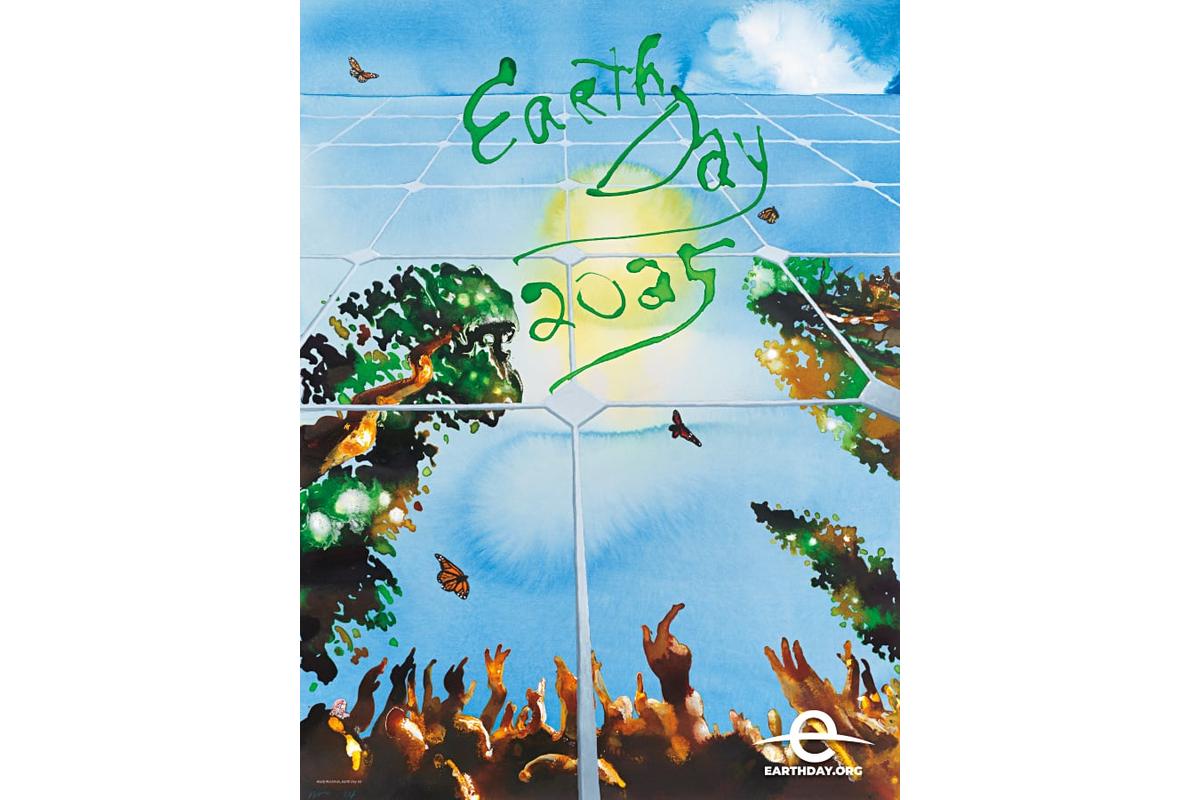Yesterday was the 55th celebration of Earth Day. This year’s theme was “Our Power, Our Planet”, with a focus on how rapidly growing renewable energy sources are promising hope in the fight against the climate crisis.
Earth Day is a day set aside to remind people to protect our planet. It’s always held on April 22. It began in the US in 1970 after a bad oil spill. The push to create Earth Day led to a wider environmental movement. By the 1990s, the idea of Earth Day had spread around the world.

(Source: [CC BY-NC-ND 4.0], © 2025 Earthday.org.)
In 2025, there are many reasons to be concerned about the climate crisis. Fossil fuels are still in widespread use, and there is still far too much pollution. US President Donald Trump has pulled the US out of the Paris Climate agreement, and is rapidly reversing many of the climate efforts that have been made over the last four years.
Despite those concerns, great progress is still being made. That’s especially true in the area of renewable energy – the focus of Earth Day this year.
There are many success stories around renewable energy. Last year, for example, for the first time ever, the US got more electricity from wind and solar power than it did from coal. Texas, a state with strong ties to fossil fuels, created more wind energy than any other US state.
😕
This image has not been loaded because of your cookie choices. To view the content, you can accept 'Non-necessary' cookies.
Last year, solar power and wind power in the European Union produced more electricity than coal and natural gas combined. In the United Kingdom last year, renewable energy sources created more electricity than fossil fuels for the first time ever. Above, wind turbines in Wales, United Kingdom, in March.
Last year, solar power and wind power in the European Union produced more electricity than coal and natural gas combined. In the United Kingdom last year, renewable energy sources created more electricity than fossil fuels for the first time ever.
China is still the world’s biggest polluter. But it has put a huge amount of effort into renewable energy. China set a goal of generating 1,200 gigawatts (GW) of electricity from solar and wind power by 2030. It beat that goal at the end of 2024 – six years early. China is in the process of building wind and solar plants that will generate more electricity than all the wind and solar plants being built in the rest of the world combined.

(Source: Global Energy Monitor.)
Geothermal power comes from the heat found deep in the earth. Geothermal electricity isn’t growing as fast as solar or wind, but it is increasing. By 2050, it could supply 15% of the world’s electricity. Kenya is a leader here. Currently, Kenya gets 45% of its electricity from geothermal. And Kenya is building more geothermal plants than any other country.
😕
This image has not been loaded because of your cookie choices. To view the content, you can accept 'Non-necessary' cookies.
Geothermal power comes from the heat found deep in the earth. Kenya is a leader here. Currently, Kenya gets 45% of its electricity from geothermal. And Kenya is building more geothermal plants than any other country. Above, part of a geothermal power plant in Kenya. That’s steam coming out of the chimneys, not smoke.
One of the biggest changes to electrical grids recently is the addition of massive batteries. Batteries, like geothermal power, work all the time, day and night. Last year the US added over 10 GW of battery storage to the grid, bringing the total to over 20 GW. That’s as much power as 20 nuclear power plants. US battery storage could more than double by the end of 2025.

(Source: EIA.gov.)
The climate crisis is still a huge challenge that the world must face. But the rapid growth in clean energy is a promising sign that in some areas, at least, great progress is being made.
